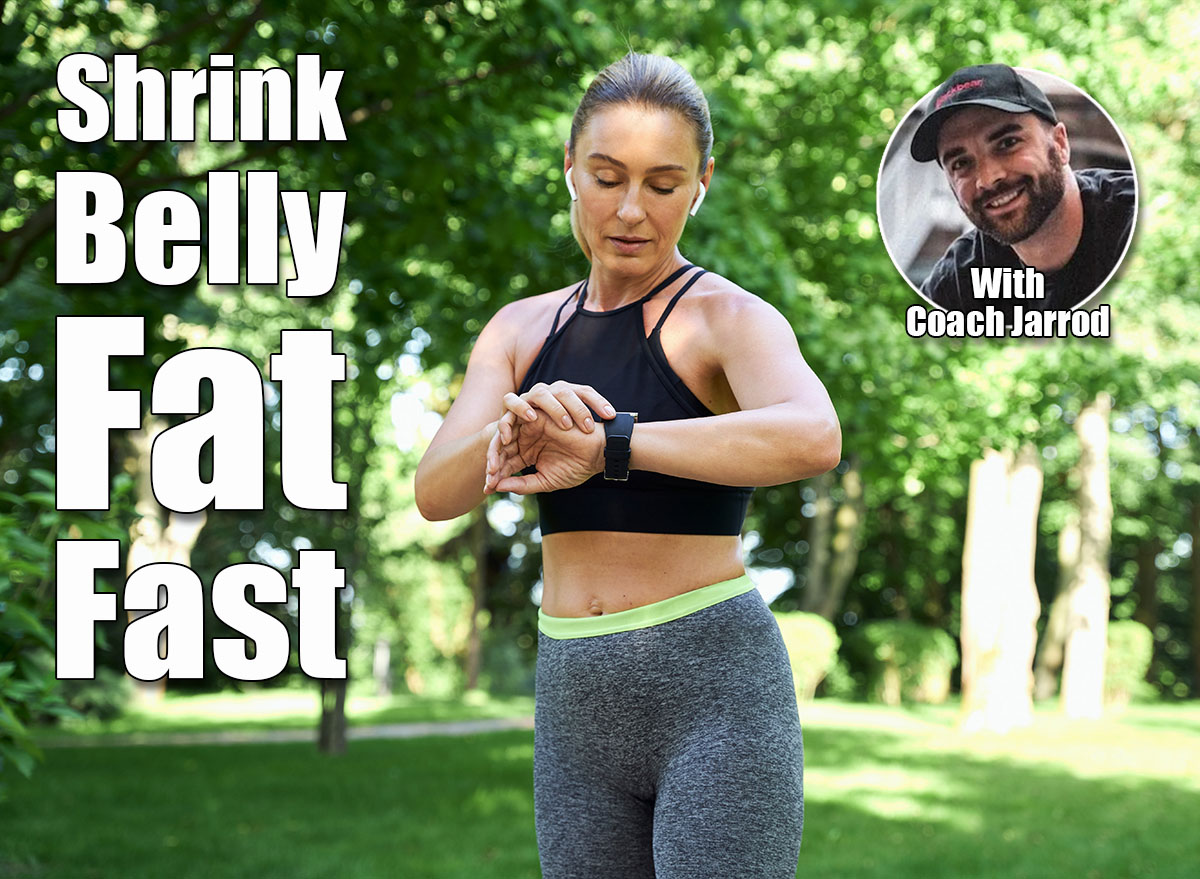Here’s How Long Your Walking Workout Should Be to Shrink Belly Fat

Walking is one of the simplest ways to lose weight and trim your waistline, but the question most people ask is: how long do you actually need to walk to see results? The answer is more encouraging than you might think. Instead of logging endless miles, it comes down to hitting the right weekly target and sticking with it consistently.
Experts recommend at least 150 minutes per week of moderate activity for overall health, but if your goal is weight loss and belly fat reduction, bumping that up to around 250 minutes per week is the sweet spot. That’s about 30 to 90 minutes per session, depending on your schedule. Think of it as carving out time for a daily walk, plus a longer session or two each week.
Another easy way to measure your walking is by the number of steps. Research shows that adding around 2,500 steps per day, on top of your normal baseline, can help with fat loss. That’s roughly a 20-minute brisk walk, which feels a lot more doable than obsessing over hours of cardio.
But duration and steps are just the beginning. How you walk and when you walk also make a big difference in results. Below, I’ll break down everything you need to know about making your walking routine effective for burning belly fat.
How Long Should You Walk to Lose Belly Fat?

Consistency matters more than perfection. For most people over 40 or 50 who want to see noticeable changes in belly fat, the following targets work best:
- 150 minutes per week: The Center for Disease Control and Prevention (CDC) recommends at least this amount of moderate-intensity activity, like brisk walking, to support cardiovascular health and overall fitness.
- 250 minutes per week: The American College of Sports Medicine (ACSM) highlights this range as the sweet spot for meaningful weight loss and trimming belly fat.
- 30 to 90 minutes per session: Breaking your walking into sessions of this length makes it long enough to burn calories but short enough to stay sustainable week after week.
- Step goal: A 2011 meta-analysis in the International Journal of Behavioral Nutrition and Physical Activity shows that even adding 2,000–2,500 extra steps per day is linked to smaller waistlines and improved health outcomes, proving that small increases really add up.
Think of walking as an investment. The more consistently you hit these weekly benchmarks, the more you’ll notice your midsection slimming down over time.
How to Maximize Your Walking for Belly Fat Loss
If you want to make your walks work harder for you, focus on intensity, technique, and timing.
Tip #1: Pick Up the Pace
A brisk pace can dramatically increase the calories you burn compared to a leisurely stroll. Walking faster forces your body to use more energy, raises your heart rate, and improves cardiovascular health at the same time. If you’re slightly breathless but can still hold a conversation, you’re in the right zone. This faster pace also trains your legs and core to work harder, giving you more muscle engagement and efficiency.
How to Do It:
- Start at a comfortable pace to warm up.
- Gradually increase your speed until your arms naturally swing.
- Keep your chest tall, shoulders back, and eyes forward.
- Aim for 15–17 minutes per mile, or about 3.5–4 mph.
- Maintain this pace for at least 20–30 minutes of your walk.
Tip #2: Add Intervals
Intervals keep your body guessing and elevate calorie burn. Switching between brisk and near-power-walk speeds boosts your metabolism and helps your body burn fat more effectively. This style of walking also builds endurance and keeps things from feeling monotonous, making it easier to stay consistent over the long haul.
How to Do It:
- Walk briskly for 2–3 minutes.
- Pick up the pace to near power-walk level for 30–60 seconds.
- Return to your brisk pace for recovery.
- Repeat this cycle 6–8 times.
- Finish with a 5-minute cool-down walk.
Tip #3: Tackle Inclines
Walking uphill activates your glutes, hamstrings, and calves much more than walking on flat ground. Incline training challenges your cardiovascular system and builds strength in your lower body, which not only improves fat loss but also makes daily activities like climbing stairs easier. Adding hills or treadmill incline sessions into your routine can break plateaus and make your workouts feel more dynamic.
How to Do It:
- Find a hill or set a treadmill incline to 3–5%.
- Walk uphill for 2–3 minutes at a steady pace.
- Reduce incline or walk flat for 2 minutes.
- Alternate between incline and flat walking for 15–20 minutes.
- Cool down on level ground.
Tip #4: Use Good Posture
Posture can make the difference between a walk that simply burns calories and one that strengthens your whole body. Standing tall engages your core, improves breathing, and prevents unnecessary strain on your back and joints. Practicing good posture also trains your body to move more efficiently, which makes longer walks easier and less tiring.
How to Do It:
- Stand tall with your head up and shoulders relaxed.
- Swing your arms naturally with elbows bent at 90 degrees.
- Keep your core gently engaged as you step.
- Land on your heel and roll through to your toes.
- Avoid slouching or looking down at your phone.
Morning Walks vs. Post-Meal Walks

The timing of your walks can unlock different benefits. Morning walks tend to set the tone for your entire day, while post-meal walks provide powerful support for digestion and blood sugar control. Both options bring unique advantages, and using a mix of the two can give you the best results.
- Morning walks: Boost metabolism, energize your body, and help regulate hormones tied to hunger and fat storage. They’re also easier to stay consistent with since nothing has gotten in the way yet.
- Post-meal walks: Even 10 to 15 minutes after eating helps lower blood sugar, improve digestion, and prevent energy crashes. These short walks are especially useful for trimming belly fat linked to insulin resistance.
- Best approach: Combine both when possible. Morning walks give you a head start on calorie burning, while post-meal walks keep your metabolism steady throughout the day.
Setting Realistic Expectations

Walking is a powerful fat-loss tool, but it’s not a magic bullet. Results come from consistency, proper nutrition, and smart exercise pairings. Understanding what walking can—and can’t—do will help you stay motivated for the long haul.
- No spot reduction: Walking reduces overall body fat, which leads to a smaller waistline over time, but it won’t target belly fat alone.
- Nutrition is key: Pair your walking with balanced meals to accelerate fat loss.
- Add resistance training: Building lean muscle helps raise metabolism and makes fat loss more efficient.
- Include variety: Mixing in higher-intensity workouts like cycling, running, or strength circuits can amplify results.
- Stay consistent: Daily walking builds momentum and makes weight maintenance much easier long-term.
References
- Centers for Disease Control and Prevention. Adult Activity: An Overview. Physical Activity Basics, 20 Dec. 2023, Centers for Disease Control and Prevention, www.cdc.gov/physical-activity-basics/guidelines/adults.html
- Donnelly, Joseph E et al. “American College of Sports Medicine Position Stand. Appropriate physical activity intervention strategies for weight loss and prevention of weight regain for adults.” Medicine and science in sports and exercise vol. 41,2 (2009): 459-71. doi:10.1249/MSS.0b013e3181949333
- Tudor-Locke, Catrine et al. “How many steps/day are enough? For adults.” The international journal of behavioral nutrition and physical activity vol. 8 79. 28 Jul. 2011, doi:10.1186/1479-5868-8-79